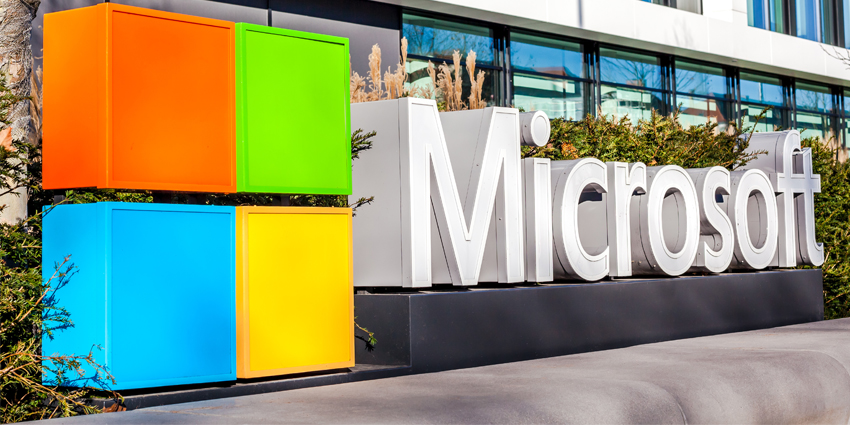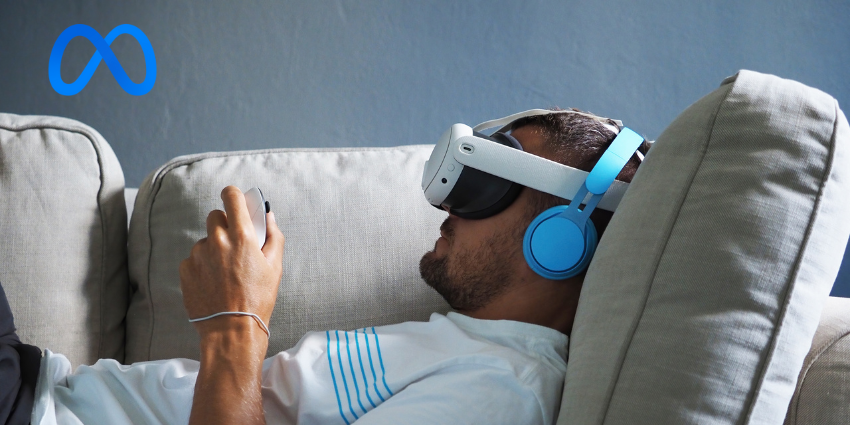Microsoft is squarely at the forefront of the immersive technology race. Along with Lenovo, Apple, Pico, Meta, and XREAL, Microsoft has become a top player in the market.
However, the firm’s approach has changed significantly since its XR origins. While Microsoft is still committed to the Hololens 2 product, its focus has recently shifted towards producing immersive solutions for third-party headsets.
Microsoft is notably receptive towards XR application flexilibty and acecssiblity, with the new OpenXR coding feature in Windows Holographic version 1.1. On the same note as open XR application development, Microsoft is also extending access to its workplace products, such as Mesh, Office, and Dynamics 635, on a range of XR devices.
Moreover, Microsoft is doubling down on providing hardware-agnostic XR productivity apps. It is noticeably looking to cement itself front and centre in the XR productivity focus that Apple pumped fuel into earlier this year.
Microsoft Power Apps Launches on Realwear Devices
Microsoft’s most recent push to scale the distribution of its workplace immersive software to a range of users comes via an update from its long-term partnership with RealWear to distribute Power Apps to Realwear’s lineup of smart glasses for frontline workers.
Realwear device operators can now access Power Apps via the RealWear Marketplace- CPO of RealWear, Rama Oruganti, said:
We are thrilled to expand our collaboration with Microsoft, utilizing Microsoft Power Apps to create innovative and efficient solutions for frontline workers. Integrating our hands-free, voice-controlled, industrial Smart Glasses with Microsoft’s Power Platform enhances productivity and safety for our users.
Oruganti also explained that the Power Apps launch “ensures real-time data transfer and retrieval from the Microsoft Dataverse, further improving operational efficiency.”
Power Apps provides enterprise clients with a low-code application development suite that enables businesses to design custom solutions with increased associability and mobility. Oruganti added, “This partnership reflects our dedication to advancing technology that supports the evolving needs of frontline professionals.”
By launching on Realwear devices, workers will be able to navigate Power Apps via the device portfolio’s integrated voice controller, ensuring a hands-free workflow during on-site procedures.
Improved Microsoft Mesh Service to Gain Mac Support
Before Microsoft launched the trusted Real Wear enterprise product, the firm also increased the availability of its Mesh immersive meeting platform on Apple Mac hardware.
Microsoft announced last month at AWE 2024 that a new and improved Mesh platform will debut for Mac users. Starting in late June, Mac users can access new Mesh features enabling virtual meetings on the firm’s leading Teams platform.
The announcement came alongside a collection of avatar integrations and usability enhancements for Microsoft’s recently launched Microsoft Mesh platform to optimize avatar content creation for enterprise use on the Teams remote communication platform.
The new features follow Microsoft’s development of its immersive avatar system, which first entered public preview in October 2021. Microsoft officially launched the Mesh service in January, aiming to provide a more engaging experience for remote or hybrid teams.
Microsoft Axe HoloLens Employees Amidst Meta Partnership
Microsoft’s current focus on providing XR software solutions over hardware fits with the firm’s move earlier this year, which saw roughly 1,000 layoffs among its HoloLens and Azure Cloud divisions.
The layoffs notably impacted Microsoft’s HoloLens 2 hardware and Azure “Moonshot” projects, which include collaboration with firms like SpaceX to enhance highly complex operations.
Microsoft spokesperson Craig Cincotta noted:
We will continue to sell HoloLens 2 while supporting existing HoloLens 2 customers and partners. – Organizational and workforce adjustments are a necessary and regular part of managing our business. We will continue to prioritize and invest in strategic growth areas for our future and in support of our customers and partners.
The device’s life hasn’t ended yet, as partnerships like Microsoft’s IVAS deal fuel its future.
However, the layoffs came amid a deep partnership with Meta. Notably, the partnership again provides innovative XR production tools instead of hardware solutions, this time to create an alternative to Vision Pro.
During Microsoft Build 2024, Pavan Davuluri, the Corporate Vice President of Windows and Devices at Microsoft, announced a new partnership with Meta to introduce a volumetric workspace for the Quest portfolio. This move directly positions the Quest as a competitor to Apple Vision Pro’s productivity goal.
Microsoft’s AI updates accompany the development of the volumetric workspace. The company highlights how AI enables it to expand its product portfolio to Quest hardware and other emerging end devices. Additionally, deep cloud integration allows Microsoft to continue supporting various end devices, enabling users to access 365 services on “any device, anywhere,” as mentioned in an official blog post.
Microsoft is clearly investing in deepening into enterprise XR solutions. While its HoloLens commitment may hinge on large-scale investments like its US Army association, Microsoft looks to be moving towards becoming a software provider rather than a hardware provider.







